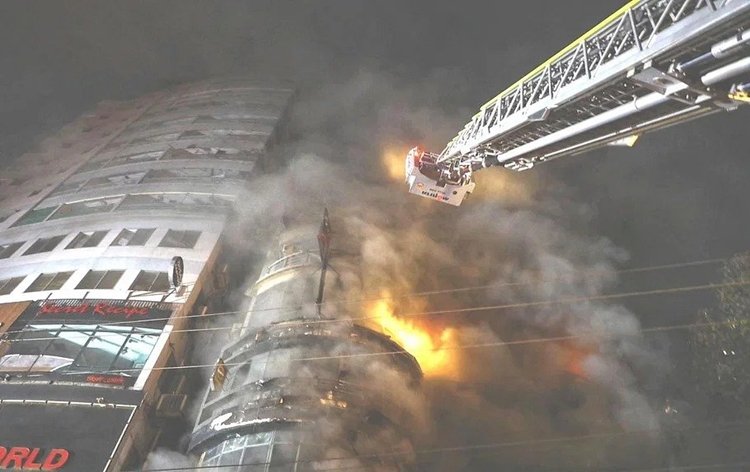There is a relation of Roti and Beti between Nepal and India. If the leaders of both the countries have to say two words on India-Nepal relations, the speech itself starts with this phrase. But this idiom of 'Roti-Beti' is gradually being eclipsed and there seems to be a rift in the India-Nepal friendship. Nepal on Friday announced printing of new Rs 100 notes with a map. It shows the disputed areas of Lipulekh, Limpiyadhura and Kalapani. These areas have been claimed by both Nepal and India for decades, leading to a bitter border dispute. Government spokesperson Rekha Sharma told the media that in the meeting of the Council of Ministers chaired by Prime Minister Pushpakamal Dahal 'Prachanda', it was decided to print the new map of Nepal, in which Lipulekh, Limpiyadhura and Kalapani will be included in the Rs 100 bank notes. Is.
Nepal's Information and Communications Minister said the cabinet approved redesigning of Rs 100 bank note and replacing the old map printed in the background of the bank note during the cabinet meetings held on April 25 and May 2. This came after Nepal published a revised map on June 18, 2020, by amending its constitution to include three strategically important areas of Lipulekh, Kalapani and Limpiyadhura areas.
Border dispute between Nepal and India
There is an open border of 1800 kilometers between Nepal and India. After the battles between the East India Company and the Nepalese Gorkhas, the Sugauli Border Treaty was signed between the two in 1816. But for some time there is a dispute going on regarding the western northern border point of Nepal. Mahakali river is considered as the western boundary. Nepal claims that the western border is Kalapani, which was in Nepal after 1816. It has been under Indian occupation since the India-China war in the 1960s. Along with this, Nepal also raised controversy regarding Limpiyadhura and Lipulekh areas. Due to this area adjoining China, it is a trijunction point, which has its own special strategic importance. During the time of Pandit Jawaharlal Nehru, before being removed from power, Nepal's first Prime Minister Mohan Shamsher Rana had signed a friendship treaty with India. This treaty signed on 31 July 1950 is signed by Mohan Shamsher and Indian Ambassador Chandeshwar Prasad Narayan. In Nepal it is believed that the 'protocol' of the signatories is not correct. To save power, the Ranas made a treaty with India, which weakened Nepal's sovereign authority.
How dependent is Nepal on India?
Import of petroleum products, rice and medicines from India
India's share in foreign investment is more than 30%
150 Indian companies related to banking, insurance, education, tourism in Nepal
20 to 25 lakh Nepali citizens in India



